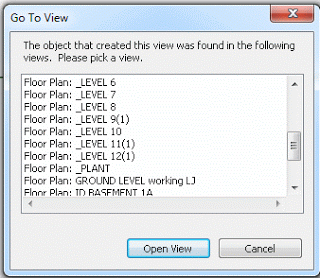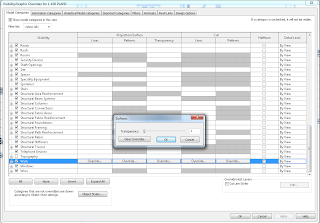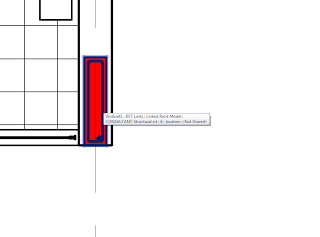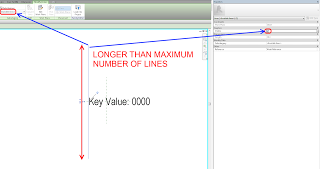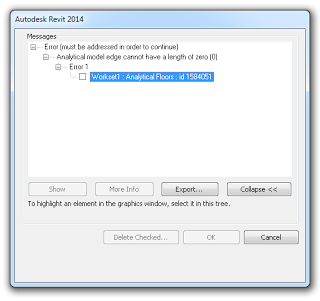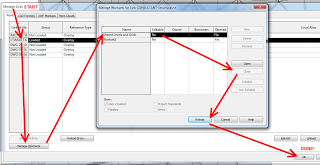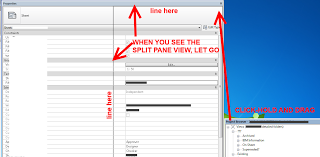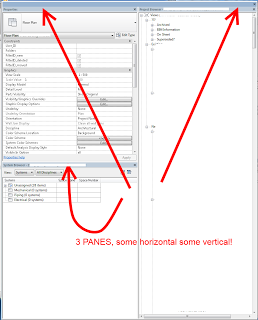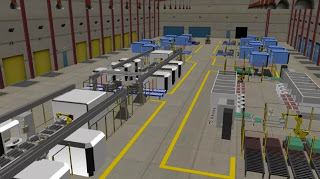It will look like this:
Painfully, Architectural Walls in a Host model often occlude the Cut Pattern settings for Structural Columns in a Linked Model. You may be able to see the edges of the Structural Columns, but any View overrides to the Revit Links tab, and even Filters, do not show the Structural Column cut pattern.
Essentially, the Walls in the host model are hiding them (like taking view order precedence or something). Structural Columns should have Cut Dominance, but this does not seem to work where links are involved.
So, here is how to fix it – just override the Transparency of Walls to 1:
Obviously, you can do this in a View Template for easy application to multiple views.
Helping search index:
structural column in revit link cut pattern
Make your Label aligned to Top and Left. Add a long line of Invisible Lines type a little bit further Left than the label itself.
Your leader will now attach at the midpoint of the Invisible Line, provided the Label element does not become bigger (too many carriage returns) than the Line itself.
This works for any kind of basic annotation tag – Keynote Tags etc.
From:
Revit – Multi-line Workaround for Generic Annotations – Autodesk – Video Tutorial
We are seeing this error on a received Structural model:
Analytical model edge cannot have a length of zero (0)
Revit does not offer a solution – you can’t Delete Checked, and you can’t press OK. It just keeps coming back.
Unticking the “Structural” instance parameter for the hosting floor will work (it just gets rid of the problematic Analytical Floor), even if unticking the “Enable Analytical Model” box in the Properties Palette won’t…
However, I think this is a bug or at least an undocumented problem that needs a better fix.
Some forums mention the issue, but there is no real solution yet:
Analytical model edge cannot have a length of zero… – Autodesk Community
Analytical Model Edge Warning
Boston RUG Oct 2013: Families Pt 1 from James Vandezande on Vimeo.
Recorded at the Oct 17, 2013 meeting of the Boston Revit Users Group, this video features an introductory presentation on creating custom Revit families.
If you want your entire geographically separated team to have access to the same linked files, you need to upload them to Revit Server. This also goes for CAD / DWG files, which will need to be imported into an RVT if you want to save them directly to RS. 2D DWG files can be referenced by Linked View in the host project if necessary.
Here is a bit of a workflow that may help:
More info:
Help: Linking Server-Based Workshared Models
Other links and info:
This RFO post details what some firms are doing with Revit Server and links:
Revit Server & Linked Consultant Files
Revit Server Administrator 2013 displays “Server Error” upon loading the GUI
10 Things to Know About Revit Server – The Revit Clinic
Removing and Replacing Models on Revit Server – The Revit Clinic
Download at:
AutoFloorMaker.addin
AutoFloorMaker.dll
C:ProgramDataAutodeskRevitAddins2014
It comes with a disclaimer, you can read more at:
http://translate.google.com/translate?sl=auto&tl=en&js=n&prev=_t&hl=en&ie=UTF-8&u=http%3A%2F%2Fpuntorevit.blogspot.com.au%2F2013%2F11%2Fauto-floor-maker-external-command.html&act=url
Most of you know that in Revit 2014, you can stack Project Browser, Properties Palette and other “panes” on top of each other, resulting in a tabbed dialog.
But did you know you can also drop them beside each other, resulting in a Split Pane view? Like this:
If you are old-school and want to subscribe in a RSS reader, try this link:
here
I used this method to create it…
I am loving Navisworks more with every passing day. A job doesn’t have to be a fully collaborative / coordinated project in order to get benefit from Navis. Here is a collection of recent information and resources relating to Navisworks. Hope you find something interesting!
Firstly, a link to the Navisworks updates page.
Navisworks 2014 support for BIM 360 Field http://t.co/SLXs67e1T3
— Autodesk Navisworks (@Navisworks) August 13, 2013
On Revit – Navisworks implementation generally:
“… contractor will import the Revit model into Navisworks and use Navisworks to ‘virtually construct the building’, creating construction sequences to ensure every element slots into place, almost like a jigsaw. Linking the model to packages like Microsoft project will allow digital construction monitoring against the project schedule. This is happening all over the world…”
via
http://revitst.blogspot.in/2013/08/revit-collaboration.html
Using Catalogues in Navisworks Quantification:
http://beyonddesign.typepad.com/posts/2013/08/using-catalogues-in-navisworks-quantification.html
Coordinating Models stored in Vault using Navisworks:
Up and Running with Autodesk Navisworks 2014
by Deepak Maini
I have been reviewing this book and I really enjoy its content. It is detailed, comprehensive and easy-to-follow. Highly recommended for those who are learning Navisworks or those who want to increase their proficiency and efficiency when using Navisworks… More on this book in a future post.
Downloads (via this):
Table of Contents
Tutorial files
Australia / NZ purchase page:
here
Amazon page for the Up and Running book:
http://www.amazon.com/Up-Running-Autodesk-Navisworks-2014/product-reviews/1482605279
Training course by Deepak:
http://www.cadgroup.com.au/community/blog/cadblog/index.php?showentry=330
4D IFC Importer for Navisworks Manage 2014
At this point in time, you can’t create products in Navisworks from the API, but if you import the IFC using the native importer (IFC2x3 only), then you can run my IFC enhancer (plugin can be downloaded from http://www.geometrygym.com/downloads ) which can generate the timeliner tasks and identify the ifc products by their unique identifiers.
Download:
ggNavisIFC2014x64 v0.0.02.msi (18th October 2013) Navisworks 2014
New plugin to extract 4d information from IFC files and convert into Navisworks timeliner.
Read more:
http://geometrygym.blogspot.com.au/2013/10/navisworks-4d-ifc.html

